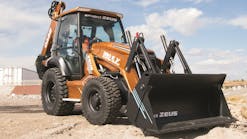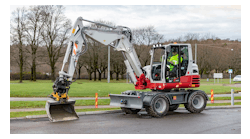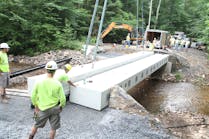It’s an issue that has been under consideration for quite a while for heavy equipment manufacturers, construction contractors, and company CEOs alike. That is the issue of an aging and retiring skilled labor force. OEMs are making their iron easier to operate through technology. Employers are reaching out in new ways to a younger and more diverse pool of potential workers. Yet, it seems little progress has been made in replacing the outgoing workforce.
The website, Construction Dive has published a great article by Shalina Chatlani titled, “Filling the void: How construction executives can embrace diversity in an evolving workforce.” Chatlani’s main point is that being able to target the next generation of workers could mean the difference between the success or failure of a company. Her article focuses on the increasingly diverse demographic of the American workforce as well as how to tap into that new generation.
She writes:
Addressing the challenges of a radically different labor force will be critical to maintaining the national economy, according to Martha Ross, a fellow at the Brookings Institution’s Metropolitan Policy Program, in her article on diversity in the labor market.
“Recent related work shows that by their early 20s, young white adults are more than twice as likely as their black and Latino peers to have earned a bachelor’s degree…it’s not surprising that young blacks and Latinos have higher unemployment rates than whites,” wrote Ross, who credited the statistic to a strong correlation between education and employment, as well as pre-existing forms of discrimination in hiring.
“…It’s clear that increasing the skills, educational attainment, and employment rates among young people of color is a major challenge facing both the nation and individual metropolitan labor markets,” she wrote.
Also:
Just like in other industries, construction leaders have been trying to find ways to make their sector more appealing to millennials that might not look toward the industry as a first choice. In fact, a December survey by Building Design + Construction showed that the lack of experienced professionals and project managers has led to a hiring crisis that has “stymied” many architecture and construction firms in the U.S.
Sizemore said, “I’m a part of the baby boomer generation, and when I came into the construction industry, I was really looking forward to the opportunity it would offer me. I don’t think this generation sees it the same way.”
“One of the things we face in terms of challenges is attracting millennials to the industry. That is going to take a mindset shift in terms of parents promoting our industry as a viable career of choice, not a second career choice,” Sizemore added. “It has to be viewed not as an alternative to college, but as an equal to college. This is a career that is an equal in necessity of skill, talent, ability and knowledge as any four-year degree institution.”
The best way to attract new workers to the industry, Bellaman said, is to emphasize to younger audiences the true nature of construction on different levels. He said people need to understand just how technical and innovative building can be. In order to maximize success and capitalize on the technological expertise, while also maintaining the fieldwork experience of older workers, CEOs ought to find ways to intersect younger and older generations.
I urge you to read her entire article.
There have been recent gains. The Association of General Contractors is reporting this week that construction employment has increased in 228 out of 358 metro areas, declined in 82, and was unchanged in 48. Ken Simonson, the association’s chief economist says, “Contractors are adding employees in most parts of the country, while construction job losses are primarily in areas that are most affected by the steep decline in oil and gas drilling. However, increases in construction employment are becoming less widespread as more contractors run into difficulty finding qualified workers.”
Association officials said the latest employment figures underscore the need to reinvigorate high school-level training programs to encourage more students to pursue construction careers. Association officials urged Congress to act on legislation to reform and increase federal funding for career and technical education to encourage more high school students to pursue high-paying careers in construction.
And here’s a little something extra that I’ll pass along. I’m hoping the next generation finds it amusing as much as I hope the older generations find it nostalgic. Let’s keep punching that time clock!








